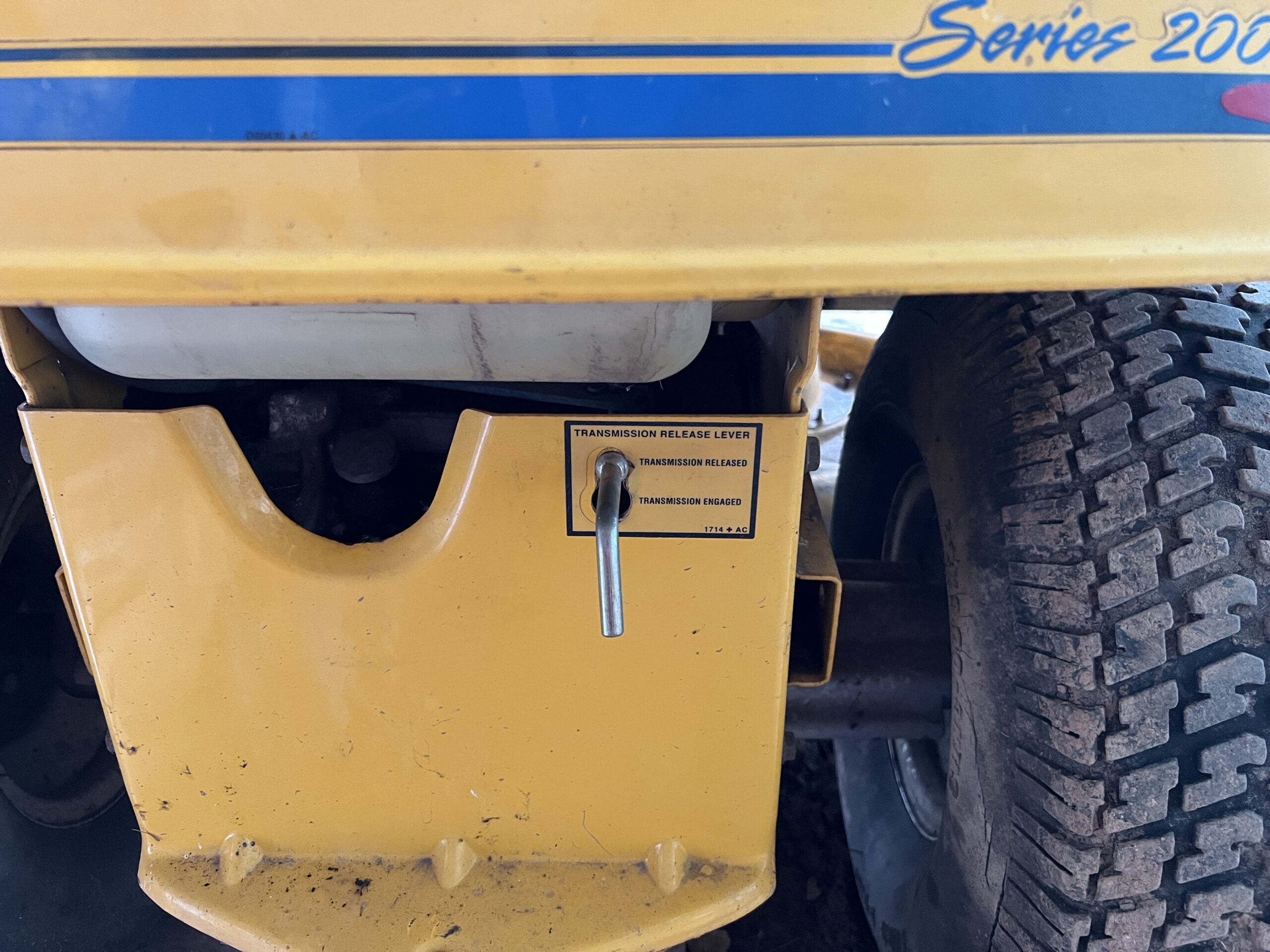There are essentially two different ways how to put a riding lawn mower in neutral. It depends on the type of transmission that is found on the machine, but both ways are quite simple to do.
Why Would you Put a Riding Lawn Mower in Neutral?
The most common reason you’d want to put a riding lawn mower in neutral is if you’re simply pushing it or towing it.
By releasing the transmission, the machine can roll quite a bit easier if it is in neutral. Furthermore, in the case of a hydrostatic drive machine, you can actually damage the transmission if you attempt to roll it with the transmission engaged.
What Type of Transmission is it?
First, we need to determine what type of transmission your machine has in order to put it into neutral. This is quite easy to tell, just by looking at the machine.
The two most common types of transmissions found on riding lawn mowers are manual transmissions and hydrostatic transmissions.
If the machine has a “stick shift,” similar to a manual transmission vehicle, then it is a manual transmission riding lawn mower.
If the machine does not have a “stick shift,” but simply has forward and reverse petals, then it is a hydrostatic drive transmission (most likely).
How to Put a Manual Transmission Riding Lawn Mower in Neutral
Like a vehicle, a manual transmission riding lawn mower required a clutch to be disengaged in order to change gears.
In order to put the machine into neutral, simply depress the clutch petal or lever, and then move the selector to the neutral position. This can be done with the machine running or not.
How to Put a Hydrostatic Drive Riding Lawn Mower in Neutral
Since a hydrostatic drive riding lawn mower does not have a shifter, this begs the question: how do we put it into neutral?
Luckily, there’s a very simple solution – a neutral valve.
This is often found on the rear of the machine, between the rear wheels. Oftentimes, there’s a diagnostic diagram that indicates the position of the valve.
In one position (typically pushed inwards), the transmission is engaged for operation. In the other position (typically pulled out), the transmission is released, and the machine is in neutral.
Simply pull the valve into the “free,” or neutral position, and your machine is now in neutral.
Recap
So depending on your machine’s transmission, we just learned the two different ways to put it into neutral. There is the off chance that your machine is a CVT transmission as those are becoming more common. Your best bet to find out how to put it in neutral is to refer to the owner’s manual for your specific machine.
As an Amazon Associate I earn from qualifying purchases.
